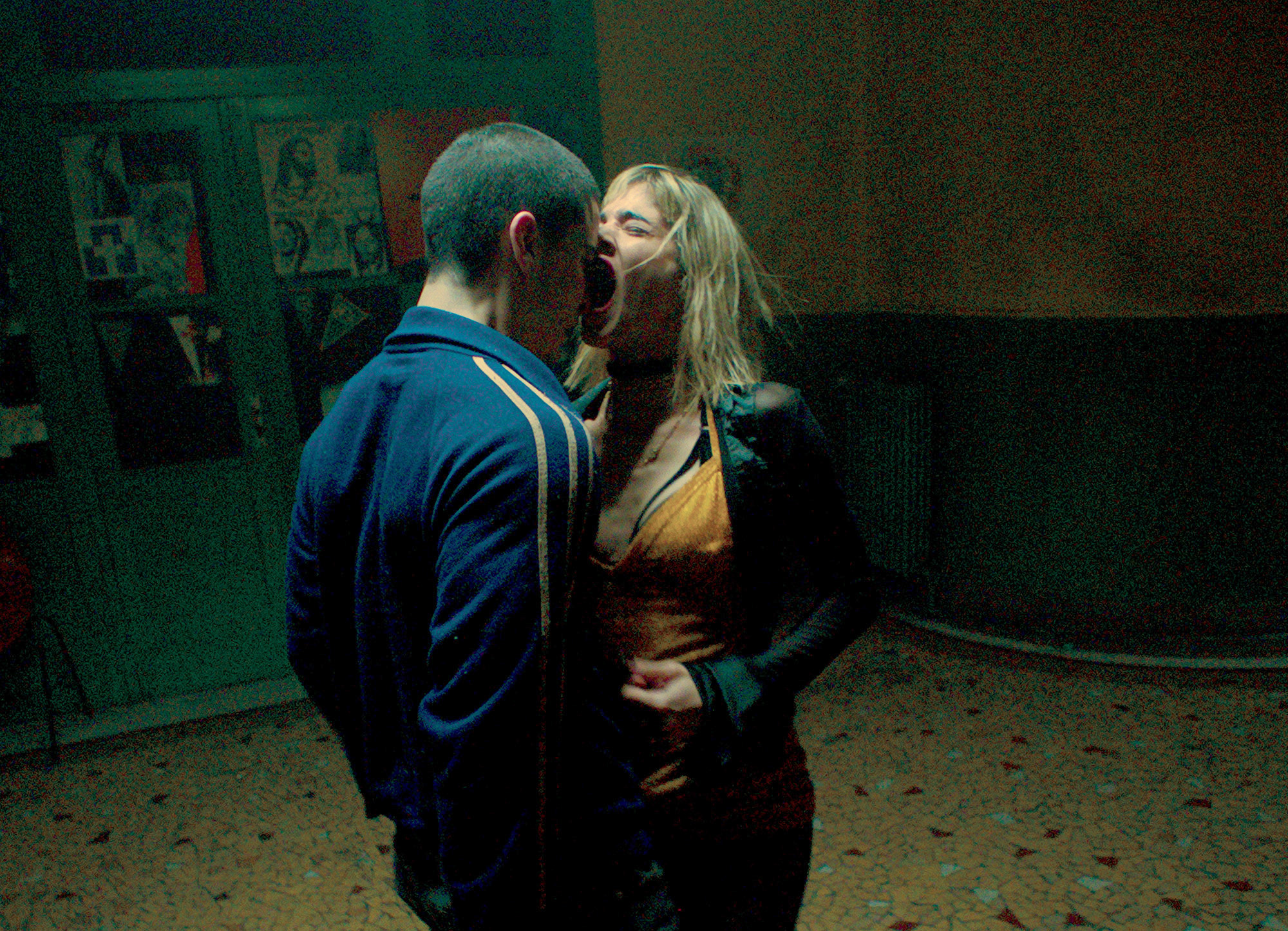Gaspar Noe’s Climax, about a troupe of young dancers whose group rehearsal goes spectacularly wrong after someone spikes their sangria with LSD, is a sensory overload of style and cool, a hypnotically absorbing head trip amounting to little yet an undeniably fun watch.
Noe, the French-Argentine mischief maker and resident enfant terrible whose pictures are audience polarizers rife with sex, violence and lurid provocations, works here without a screenplay and a largely non-professional cast encouraged to act through music—as joyous an expression of communal dance as the movies have seen—and then U-turn to a very dark, very aberrant expression of barbarism.
Set in the 1990s, the picture opens with an overhead shot of a young woman lying in the snow, writhing from a trail of blood, followed by a self-conscious (and very Gaspar Noe) reverse credits scroll before plunging into a sequence so enervating—an extended overhead shot of the film’s assembly of young dancers strutting their stuff in near orgiastic frenzy to a throbbing techno beat—it reminds you what the human body is capable of, a clear freedom and liberty of physicality and expression.
This first half of Climax, a late-night explosion of music, moves and attitude set in a remote abandoned school, is most compelling. As ace cinematographer Benoit Debie’s roving long takes eavesdrop on the dancers’ personal couplings and improvisational conversations, largely about sexual desires and conquests, the film attains an easy, immediate likability despite its complete (and intentional) superficiality.
Lest one get the idea that Climax is a latter day, Millennial A Chorus Line, I should convey that its primary raison d’être is as a psychological (and frequently visceral) horror film, at least once that mysteriously spiked sangria makes its appearance. Who would do such a thing? And why? Noe isn’t interested in a whodunnit; instead, he wants to drive everyone to the gallows of human civility.
A character urinates in front of others. A young child is locked in an electrical closet, his cries for help unanswered. A lynch mob expels a suspected culprit before violently attacking another. Vicious beatings are followed by self-mutilations. Secret pregnancies meet violent ends. And odd couplings, including an incestuous advance, are on order. Obviously, a very bad trip.
Part of what makes this as compelling as it sometimes may be lies in Noe’s decision to sidestep the shopworn visual clichés of drug hallucinations. Instead, he simply allows us objective observation of increasingly absurd behaviors as they unfold in an established physical world. The camera spins every which way (even upside down), lights strobe, title cards blast off the screen and music (courtesy of Daft Punk, Giorgio Morodor, Gary Numan and others) throbs—yet we always remain at a distance.
As impressive as the picture’s considerable technique may be, diminishing returns set in as this 95-minute exercise progresses, most because while the situation is inherently compelling there is simply no one to care about and little structure to sustain the mania.
Still, a few of the attractive stars’ charisma manages to punch through the picture’s limited scope, notably the agile, “French ambassador of dance” Romain Guillermic as coveted, hot number David. And then there is professional dancer and actress Sofia Boutella, the only recognizable face, defacto troupe leader and movie’s real star. Boutella, reportedly bewildered when Noe requested she act without a script, displays a most expressive set of features, loads of sex appeal and a focused intensity in her close-ups.
Otherwise, the picture is populated with unknowns Noe discovered Paris street dance battles on by scouring internet vlogs, and their raw, unprofessional acting gives Climax an undeniable authenticity. Their low-res, taped audition videos, which frame the picture’s opening moments, have a rough honesty as we watch them opine on their love of craft. That these testimonials are displayed on a 4:3 television (remember when a 25-inch screen was a big deal?) surrounded by a collection of vintage, VHS horror titles including Suspira, Zombie and Possession, the 1981 Isabelle Adjani shocker and gold standard movie performance freak-out of all time, suggests an early harbinger of what is to come.
The school itself proves a marvelous set, harkening to the great movie funhouses of horror lore, a sort of dilapidated Suspiria dance academy by way of Hostel whose long, dimly lit hallways and door frames reveal new surprises upon entering.
Noe, whose films have been known to leave audiences apoplectic and sometimes awash in controversy, makes films “for himself” as he’s said and disagrees with being labelled a provocateur because he cares little for audience concerns. Certainly pictures like I Stand Alone, about an incestuous Parisian butcher and Irreversible, featuring the notorious, ten-minute sexual assault of Monica Bellucci, would suggest as much while simultaneously signalling a defiant, singular artist.
But his ambitious Enter the Void, a nearly three-hour, neon streaked, Tokyo-set opus both narratively and thematically his most complex film, moved beyond shock value (though it was still a driver) toward something daringly complex, even inspired in its excess.
There are no characters in Climax, no real plot and certainly little structure, and the degree to which its enjoyable can be largely found in our inability to let go of such expectations; it has a good beat, you can dance to it and, if you allow yourself, you may just be a bit horrified as well.
2 1/2 stars.



